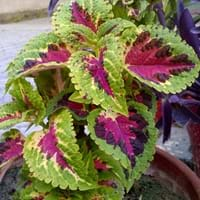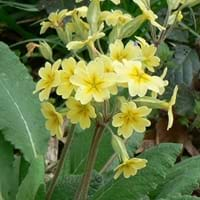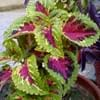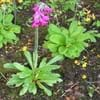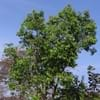Life Span
Perennial
Perennial
Origin
Eastern Asia, Malaysia
Europe, Russia
Types
Not Available
Not Available
Habitat
gardens, Subtropical climates, tropical environments
Roadsides, sand dunes, Waste areas
USDA Hardiness Zone
11-12
4-7
AHS Heat Zone
Not Available
7-1
Sunset Zone
Not Available
A1, A2, A3, H1, H2, 1a, 1b, 2a, 2b, 3a, 3b, 4, 5, 6, 7, 8, 9, 10, 11, 12, 13, 14, 15, 16, 17, 18, 19, 20, 21, 22, 23, 24
Habit
Bushy, Evergreen
Rosette/Stemless
Flower Color
Not Available
Light Yellow
Flower Color Modifier
Not Available
Bicolor
Fruit Color
Non Fruiting Plant
Tan
Leaf Color in Spring
Green, Red, Green, Purple
Green
Leaf Color in Summer
Green, Red, Green, Purple
Green
Leaf Color in Fall
Red, Green, Purple
Green
Leaf Color in Winter
Red, Green, Purple
Light Green
Plant Season
Summer
Summer
Sunlight
Full Sun, Partial shade
Full Sun, Partial Sun
Growth Rate
Medium
Medium
Type of Soil
Damp
Loam, Sand
The pH of Soil
Neutral, Slightly Acidic
Acidic, Neutral, Alkaline
Soil Drainage
Well drained
Well drained
Bloom Time
Early Summer
Early Summer, Summer, Late Summer
Tolerances
Wet Site
Drought
Where to Plant?
Container, Ground, Pot
Container, Ground, Pot
How to Plant?
Cuttings, Seedlings
Divison, Seedlings, Stem Planting
Plant Maintenance
Medium
Low
Watering Requirements
Requires a lot of watering
Average Water Needs, Do Not over Water, Never Over-water, Requires regular watering, Water more in summer
In Summer
Lots of watering
Lots of watering
In Spring
Moderate
Moderate
In Winter
Ample Water
Average Water
Soil pH
Neutral, Slightly Acidic
Acidic, Neutral, Alkaline
Soil Type
Damp
Loam, Sand
Soil Drainage Capacity
Well drained
Well drained
Sun Exposure
Full Sun, Partial shade
Full Sun, Partial Sun
Pruning
cut main flower spike, Cut or pinch the stems
Remove damaged leaves, Remove dead branches, Remove dead leaves, Remove dead or diseased plant parts
Fertilizers
Full-strength liquid fertilizer
All-Purpose Liquid Fertilizer, fertilize in growing season
Pests and Diseases
Downy mildew, Red blotch, Stem rot
Slugs, Snails
Plant Tolerance
Wet Site
Variety of soil types
Flower Petal Number
Not Available
Single
Foliage Texture
Fine
Fine
Foliage Sheen
Matte
Matte
Attracts
Not Available
Insects
Allergy
Not Available
Abdominal pain, Constipation, Diarrhea, Skin irritation
Aesthetic Uses
Cottage Garden, Showy Purposes, Used for making hedges
Beautification, Borders, Landscape Designing, Showy Purposes
Beauty Benefits
Weightloss
Good for skin, Making cosmetics, Stops hair loss
Environmental Uses
Air purification, Provides ground cover, Soil protection, soil stabilisation
Air purification, Food for insects, Versatility
Medicinal Uses
Asthma, Glaucoma, High blood pressure, Liver Protection, Weight loss
Eczema
Part of Plant Used
Leaves
Root
Other Uses
Used as Ornamental plant, Used for its medicinal properties, useful as a ground cover
Decoration Purposes, Medicinal oil, Showy Purposes, Used as Ornamental plant, Used for its medicinal properties
Used As Indoor Plant
Yes
Yes
Used As Outdoor Plant
Yes
Yes
Garden Design
Container, Groundcover, Houseplant, Mixed Border, Tropical
Edging, Feature Plant, Groundcover, Mixed Border
Botanical Name
Plectranthus scutellarioides
Primula elatior
Common Name
Coleus, Painted nettle
Oxlip, true oxlip
In German
Buntnessel
Hohe Schlüsselblume
In French
Vieux garçon
La Primevère élevée ou Primevère des bois
In Spanish
coleo
Primula elatior
In Portuguese
cóleus
Oxlip
Phylum
Magnoliophyta
Magnoliophyta
Class
Magnoliopsida
Magnoliopsida
Family
Lamiaceae
Onagraceae
Clade
Angiosperms, Asterids, Eudicots
Angiosperms, Eudicots, Rosids
Tribe
Not Available
Onagreae
Subfamily
Not Available
Onagroideae
Number of Species
Not Available
Importance of Coleus and Oxlip
Want to have the most appropriate plant for your garden? You might want to know the importance of Coleus and Oxlip. Basically, these two plants vary in many aspects. Compare Coleus and Oxlip as they differ in many characteristics such as their life, care, benefits, facts, etc. Every gardener must at least have the slightest clue about the plants he wants to plant in his garden. Compare their benefits, which differ in many ways like facts and uses. The medicinal use of Coleus is Asthma, Glaucoma, High blood pressure, Liver Protection and Weight loss whereas of Oxlip is Eczema. Coleus has beauty benefits as follows: Weightloss while Oxlip has beauty benefits as follows: Weightloss.
Compare Facts of Coleus vs Oxlip
How to choose the best garden plant for your garden depending upon its facts? Here garden plant comparison will help you to solve this query. Compare the facts of Coleus vs Oxlip and know which one to choose. As garden plants have benefits and other uses, allergy is also a major drawback of plants for some people. Allergic reactions of Coleus are Not Available whereas of Oxlip have Abdominal pain, Constipation, Diarrhea and Skin irritation respectively. Having a fruit bearing plant in your garden can be a plus point of your garden. Coleus has no showy fruits and Oxlip has no showy fruits. Also Coleus is not flowering and Oxlip is flowering. You can compare Coleus and Oxlip facts and facts of other plants too.
